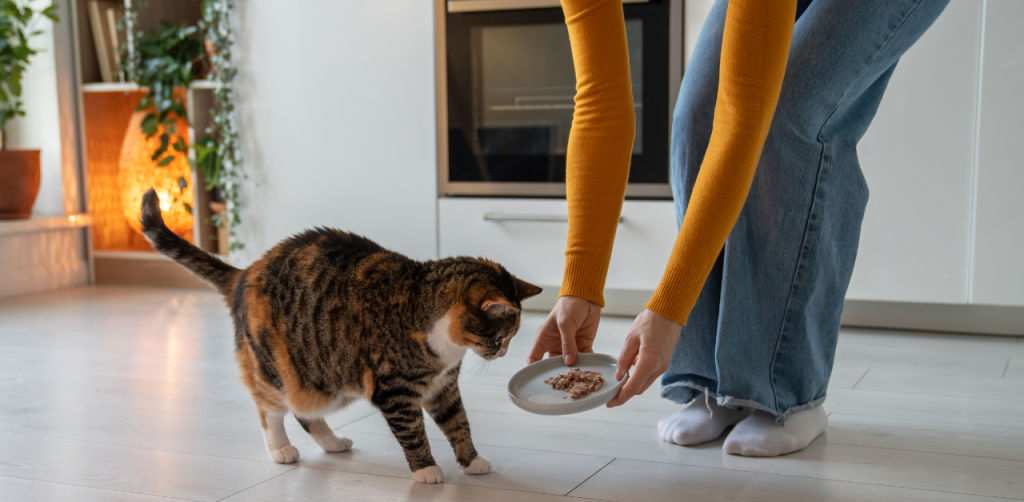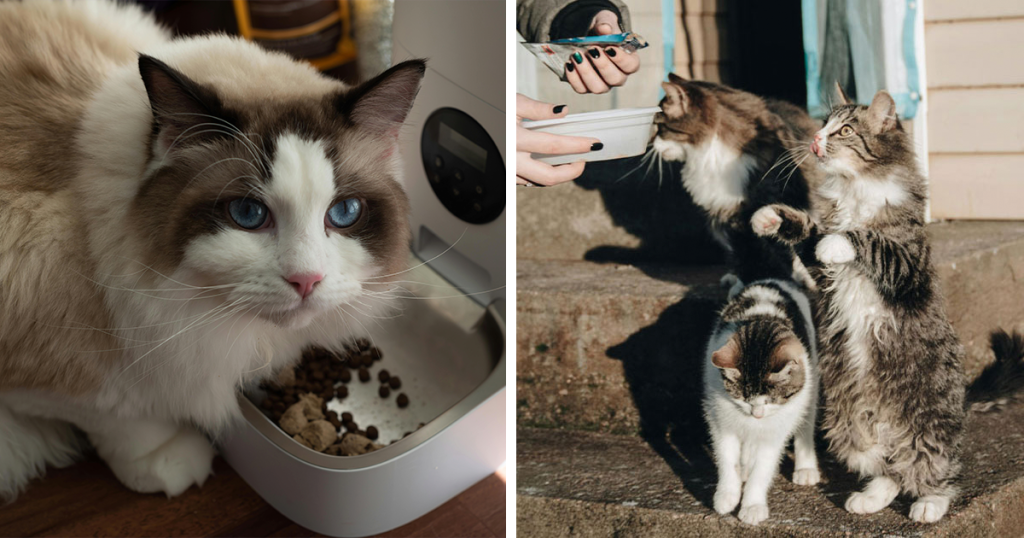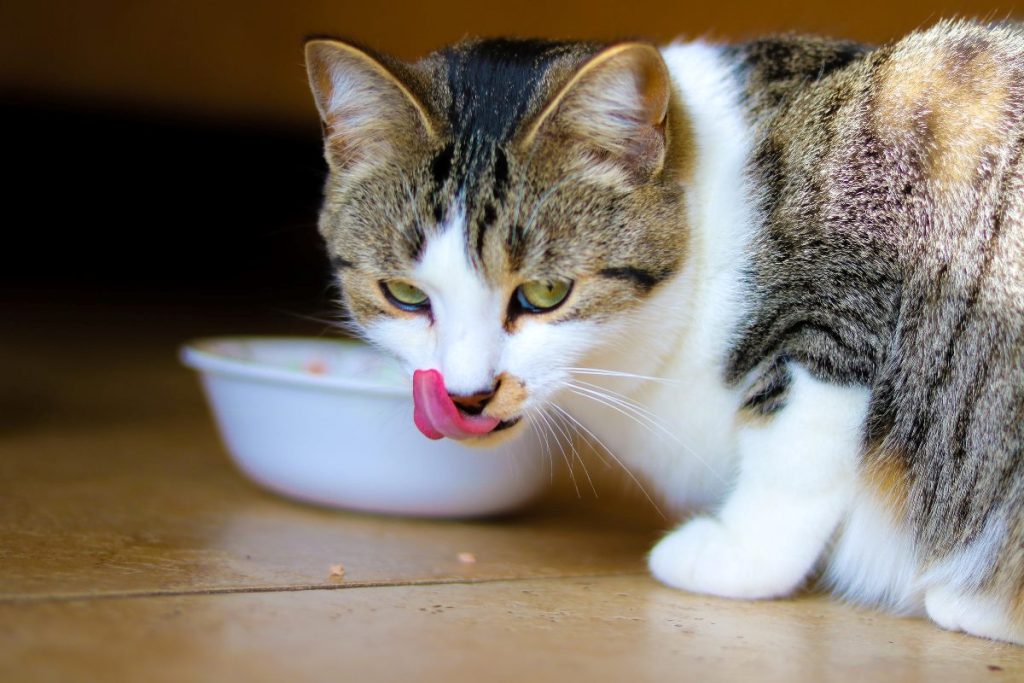Feeding your cat the right amount of food at the right times is essential for maintaining their optimal health and well-being. While it may seem like a simple task, determining how often to feed your cat can be influenced by several factors, including their age, weight, activity level, and overall health. Understanding these factors will help you create a feeding schedule that supports your cat’s needs, preventing obesity, malnutrition, and other health issues. In this article, we’ll explore how often you should feed your cat to ensure they stay healthy and happy.

Age and Stage of Life Matter
The frequency with which you should feed your cat largely depends on their age and stage of life. Kittens, for example, have high energy requirements due to their rapid growth and development. Because of this, they need to eat more frequently than adult cats. Typically, kittens should be fed three to four times a day until they are about six months old. After six months, their calorie needs will begin to stabilize, and they can transition to two or three meals per day.
For adult cats, feeding twice a day—once in the morning and once in the evening—is generally sufficient. However, some cats prefer having food available more often throughout the day, especially if they are more active or have higher energy needs. In such cases, you can divide their daily portion into three meals. Older cats, particularly those with medical conditions such as kidney disease or diabetes, may require more frequent meals to maintain their energy levels and manage their condition.
Active vs. Sedentary Cats
Activity level plays a significant role in determining how often you should feed your cat. Active cats that engage in regular exercise or spend time outdoors may have higher calorie requirements and will benefit from being fed more frequently. If you have an active cat, feeding them three times a day might help ensure they have the energy they need to stay healthy and fit.

On the other hand, sedentary cats, particularly those that spend most of their time indoors, may not need as much food. For these cats, two meals a day are typically sufficient, as long as the food is nutrient-dense and calorie-controlled. Overfeeding sedentary cats can lead to obesity, which can, in turn, lead to a variety of health problems, including joint issues, diabetes, and heart disease. Therefore, monitoring their portion sizes and feeding frequency is crucial.
The Role of Portion Control
The amount of food you offer your cat is just as important as how often you feed them. Whether you choose to feed them once, twice, or three times a day, it’s essential to measure their food to avoid overfeeding or underfeeding. Overfeeding can lead to weight gain, while underfeeding can cause malnutrition. Check your cat’s body condition regularly—if they are gaining weight, you may need to cut back on their food or reduce the frequency of meals. Conversely, if they appear underweight, consider increasing their portion sizes or offering food more often.
Most commercially available cat foods come with recommended portion sizes based on your cat’s age, weight, and activity level. However, these are just guidelines, and it’s essential to observe your cat’s weight and condition to adjust the portions as needed. If in doubt, consult your veterinarian to ensure you’re feeding the right amount of food for your cat’s health and lifestyle.
Free-Feeding vs. Scheduled Feeding
One of the key decisions when it comes to how often to feed your cat is whether to provide food on a free-feeding schedule or a more structured feeding routine. Free-feeding involves leaving food out all day, allowing your cat to eat whenever they are hungry. This method can work well for some cats, especially those who are good at self-regulating their food intake. However, it’s important to be mindful that free-feeding may lead to overeating, especially in indoor or less active cats, which could contribute to obesity over time.
Scheduled feeding, on the other hand, involves offering your cat food at specific times throughout the day. This method allows you to control their food intake more effectively, which is particularly helpful for preventing overeating and managing weight. Scheduled feeding is usually the preferred method for most cats, as it helps establish a routine and gives your cat something to look forward to.
Special Considerations for Health Conditions
If your cat has a health condition, their feeding schedule may need to be adjusted. For example, cats with diabetes often need to be fed more frequently to help regulate their blood sugar levels. In these cases, feeding smaller, more frequent meals throughout the day is generally recommended. Similarly, older cats with kidney disease or other conditions may require more frequent feedings to ensure they’re getting enough nutrients. If your cat has a medical condition, always consult with your veterinarian to determine the best feeding schedule and food plan.

Understanding Your Cat’s Appetite
Every cat is unique, and their appetite may vary depending on their personality, health, and environment. Some cats are grazers and prefer to nibble throughout the day, while others thrive on structured meals. Paying attention to your cat’s behavior and adjusting their feeding schedule accordingly can help optimize their health. If your cat suddenly loses interest in food or starts eating excessively, it may be a sign of an underlying health issue, and a vet visit is warranted.
Conclusion
In conclusion, the frequency with which you should feed your cat depends on several factors, including their age, activity level, and health status. Kittens require more frequent feedings, while adult cats typically do well with two meals a day. Active cats may benefit from more frequent feedings, while sedentary cats should be monitored to prevent overfeeding and obesity. Scheduled feeding is usually the best approach to maintain portion control and regulate your cat’s food intake. Always remember to adjust the feeding schedule based on your cat’s specific needs and consult with a veterinarian if you have concerns. By providing the right amount of food at the right times, you’ll help your cat live a long, healthy, and happy life.